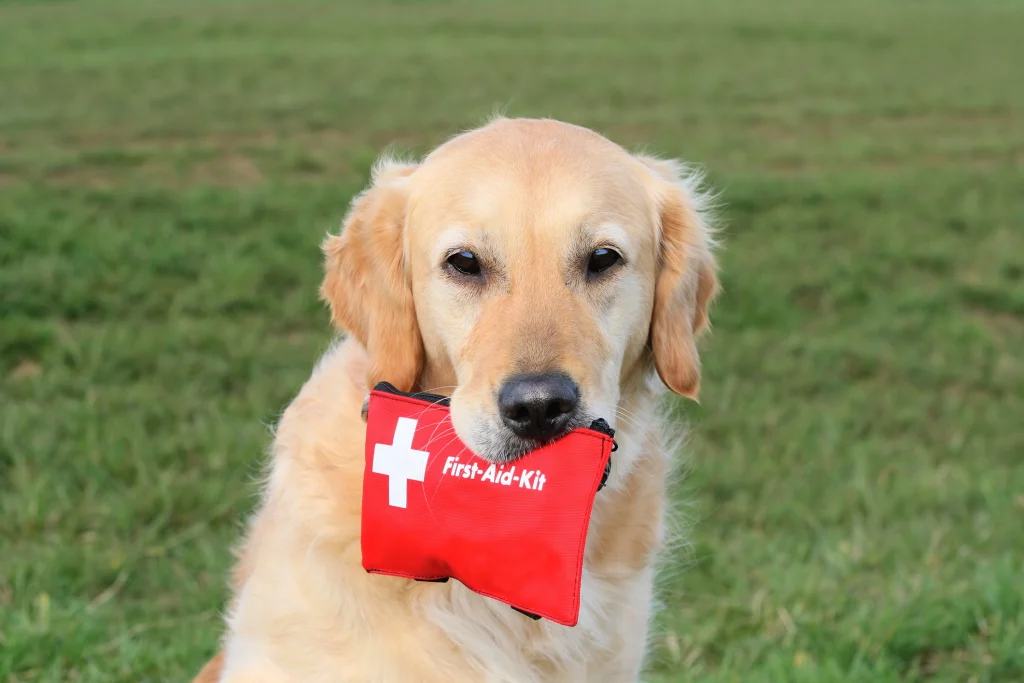What would you do if your dog chewed an electrical cord or your cat fell from a high place? What about a broken-glass cut or an insect bite? There are some cases where you can help your pet right away if you have an emergency pet medical handbook, some training, and the right supplies.
The American Kennel Club (AKC) recommends stocking a pet medical bag with scissors, magnifying glass, a flashlight, syringes, cotton balls, soft muzzle, an extra collar and leash, collapsible bowls, hydrogen peroxide and anti-microbial spray gel, tweezers, gauze and nonstick wrap bandages, plus Milk of Magnesia and charcoal to counteract poison, a digital thermometer, and a pill box with some of your pet’s necessary medications.
The American Society for the Prevention of Cruelty to Animals (ASPCA) includes these recommendations: Have some liquid soap and bottled water to flush and clean wounds, antibiotic, a pet first aid guidebook, paper towels, disinfectant, plastic gloves and a trash bag, and a towel and blanket for shock or exposure to cold.
Pet owners who live in remote areas may want to take courses to learn how to give pet CPR and know how to respond in cases of electrical shock, seizures, loss of consciousness, possible broken limbs or bleeding.
It is suggested to keep the kit, dog leash and harness, and cat carrier close to your home’s exit in case you have to make a quick dash to the vet emergency room, or to escape during a disaster.
Keep your pet’s health records up to date on a handy mobile app such as VitusVet, PetDesk, or perhaps one your vets have a preferred program they use. In the event that first aid isn’t enough and you must go to an emergency vet, you will have your pet’s medical records on hand.

